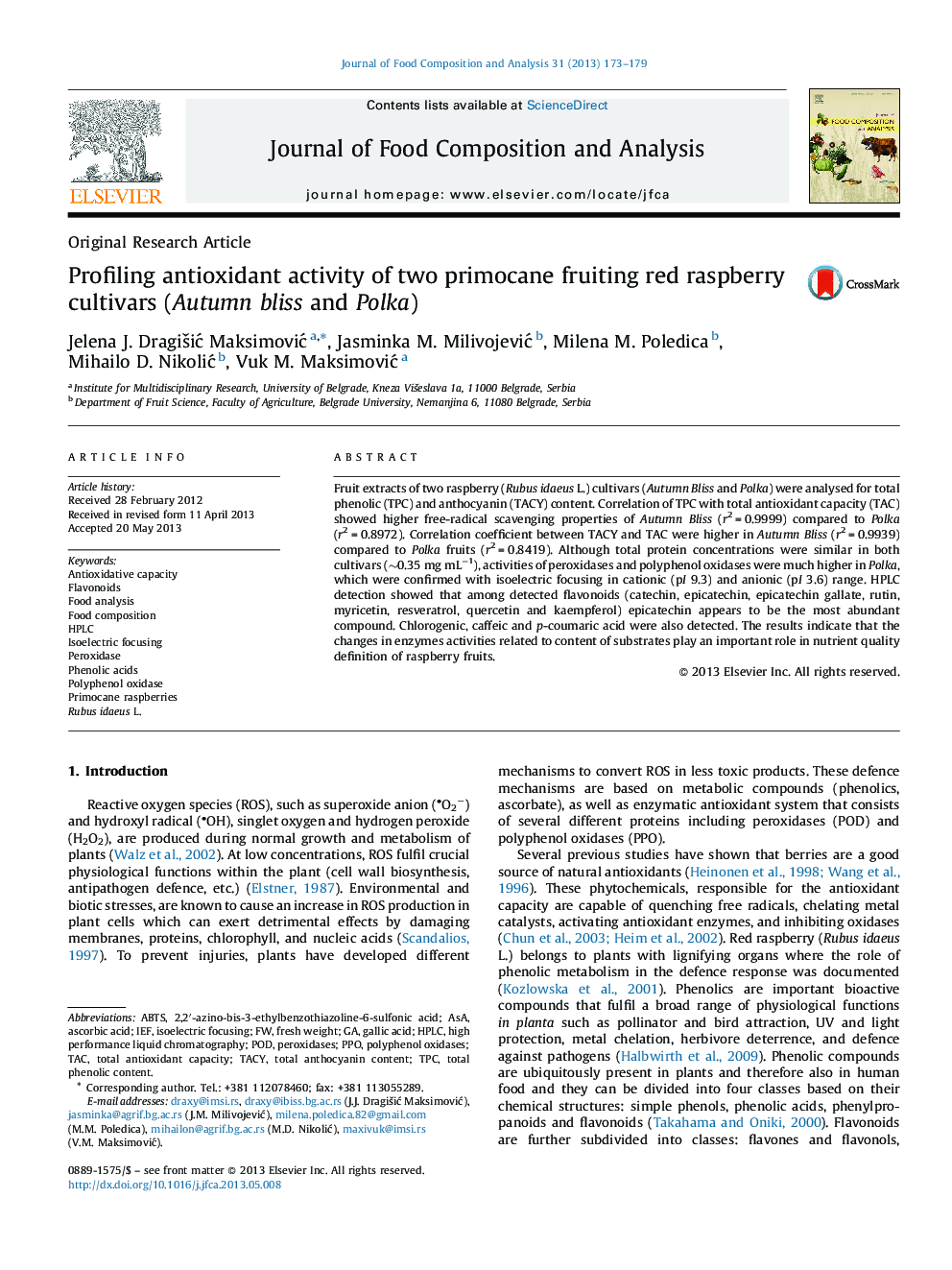| Article ID | Journal | Published Year | Pages | File Type |
|---|---|---|---|---|
| 1218310 | Journal of Food Composition and Analysis | 2013 | 7 Pages |
•Non-enzymatic and enzymatic activities of two raspberry cultivars were investigated.•Phenolics and ascorbate responsible for the antioxidant capacity were tested.•Changes in peroxidase and polyphenol oxidase activities were examined.•Results show that the enzyme/substrate ratio is key in fruit quality definition.•Raspberry antioxidative mechanisms based on metabolic compounds and enzymatic system.
Fruit extracts of two raspberry (Rubus idaeus L.) cultivars (Autumn Bliss and Polka) were analysed for total phenolic (TPC) and anthocyanin (TACY) content. Correlation of TPC with total antioxidant capacity (TAC) showed higher free-radical scavenging properties of Autumn Bliss (r2 = 0.9999) compared to Polka (r2 = 0.8972). Correlation coefficient between TACY and TAC were higher in Autumn Bliss (r2 = 0.9939) compared to Polka fruits (r2 = 0.8419). Although total protein concentrations were similar in both cultivars (∼0.35 mg mL−1), activities of peroxidases and polyphenol oxidases were much higher in Polka, which were confirmed with isoelectric focusing in cationic (pI 9.3) and anionic (pI 3.6) range. HPLC detection showed that among detected flavonoids (catechin, epicatechin, epicatechin gallate, rutin, myricetin, resveratrol, quercetin and kaempferol) epicatechin appears to be the most abundant compound. Chlorogenic, caffeic and p-coumaric acid were also detected. The results indicate that the changes in enzymes activities related to content of substrates play an important role in nutrient quality definition of raspberry fruits.
